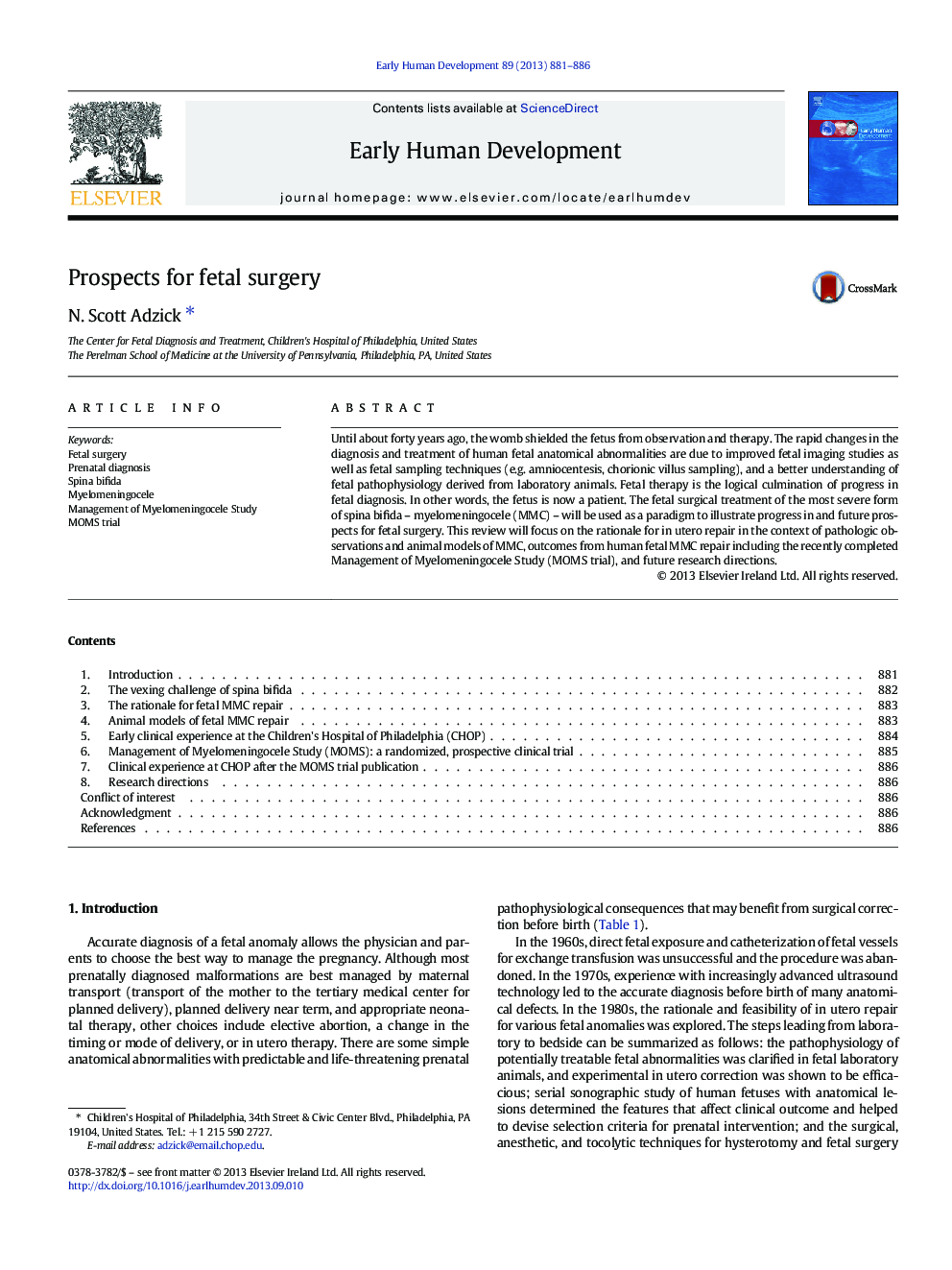| Article ID | Journal | Published Year | Pages | File Type |
|---|---|---|---|---|
| 3916752 | Early Human Development | 2013 | 6 Pages |
Until about forty years ago, the womb shielded the fetus from observation and therapy. The rapid changes in the diagnosis and treatment of human fetal anatomical abnormalities are due to improved fetal imaging studies as well as fetal sampling techniques (e.g. amniocentesis, chorionic villus sampling), and a better understanding of fetal pathophysiology derived from laboratory animals. Fetal therapy is the logical culmination of progress in fetal diagnosis. In other words, the fetus is now a patient. The fetal surgical treatment of the most severe form of spina bifida – myelomeningocele (MMC) – will be used as a paradigm to illustrate progress in and future prospects for fetal surgery. This review will focus on the rationale for in utero repair in the context of pathologic observations and animal models of MMC, outcomes from human fetal MMC repair including the recently completed Management of Myelomeningocele Study (MOMS trial), and future research directions.
